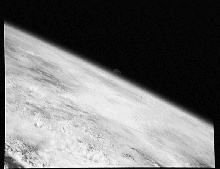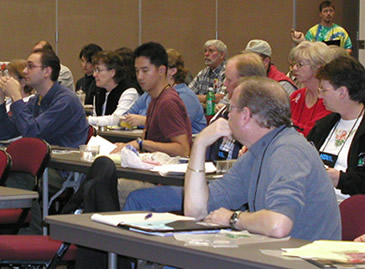 Checklist for a School Visit
Checklist for a School Visit
Click for a printable checklist!(pdf)
- Get a name and contact information for a teacher/instructor who is interested in having a scientist visit his/her classroom. Alternatively, contact the main office of your neighborhood school and let them know you are available if they would like a visitor.
- Give the teacher a call or an email and ask how you may best serve their
needs and those of their students.
- Ask the teacher what previous knowledge and experience the students have had about the topic of your visit and what content they want covered.
- Ask the teacher for specifics about the number of students you will work with at various times.
- Ask the teacher what type of instructional methods (lecture and question and answer session, or hands-on activities and experiments, or a combination) would work best for the specific visit you plan?
- Ask about the space you will be assigned and the technology and tools available. If you will be bringing activities or experiments for the class to do, make sure that the classroom is equipped for them. For instance, you may need tables, running water, or electricity depending on the activities. Or for a slide show you may wish to inquire about the availability of a screen and projector.
- Confirm the date, time and directions to the location of your visit. If you will be driving, ask where they would like you to park your car. (Some schools have large parking areas while others have smaller areas or special areas for visitors.)
- Confirm the length of time that you will have to deliver your classroom program.
- Based on your audience, decide on the types of activities you will do with
the students during your program. Resources for
fun classroom activities:
- Browse the classroom activities section of Windows to the Universe for directions to over 100 Earth and space science hands-on lessons for K-12 students.
- The National Earth Science Teachers Association provide access to a wide variety of classroom activities and other educational resources that you may find useful.
- A wealth of excellent science lessons can be found at the Digital Library for Earth System Education
- The GLOBE Program Teachers Guide provides learning activities for grades K-12
- Practice your presentation and practice how you are going to deliver instructions for any experiments or activities you plan to do with the students.
- Make a note of science terminology that you might use and think of alternative vocabulary that might be more familiar to students. For terms that you will absolutely need to use, note quick and simple definitions that can be used to describe each.
- If you will be bringing potentially hazardous items into the classroom (such as fire, live animals, or chemicals) or items that are common allergens (such as food products, especially peanuts), check with the teacher to see if there are school or classroom rules to which you should adhere.
- Check supplies. Make sure that you have everything you need and that the equipment you are bringing into the classroom works properly before your visit. If you are doing experiments or activities with the students, make sure that you have enough supplies for all students to participate.
- Estimate how much set-up time you will need and plan accordingly.
- Arrive early! Most schools now have some form of security so check with a staff member at the school�s front office when you arrive. You might need to sign in and sign out. You might need to wear a visitor badge when you are in the building.
- Have fun!
Resources:
- Scientists in Schools Home
- About Scientists in Schools
- Getting to Know a School
- Definitions of Common Educational Terms
- Checklist for a School Visit
- Working with K-12 Students
- Science Topics for Students of Different Ages
- Making a Lesson Plan
- Recommended Resources
Last modified September 30, 2005 by Lisa Gardiner.









